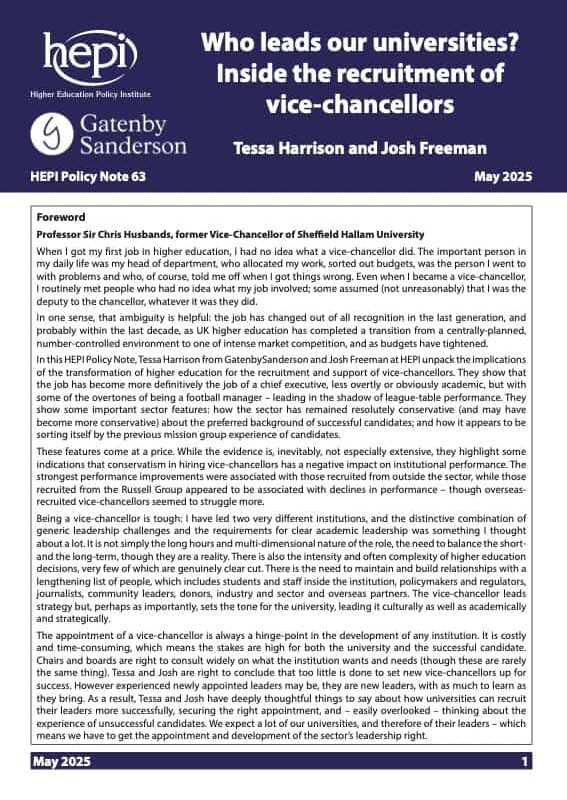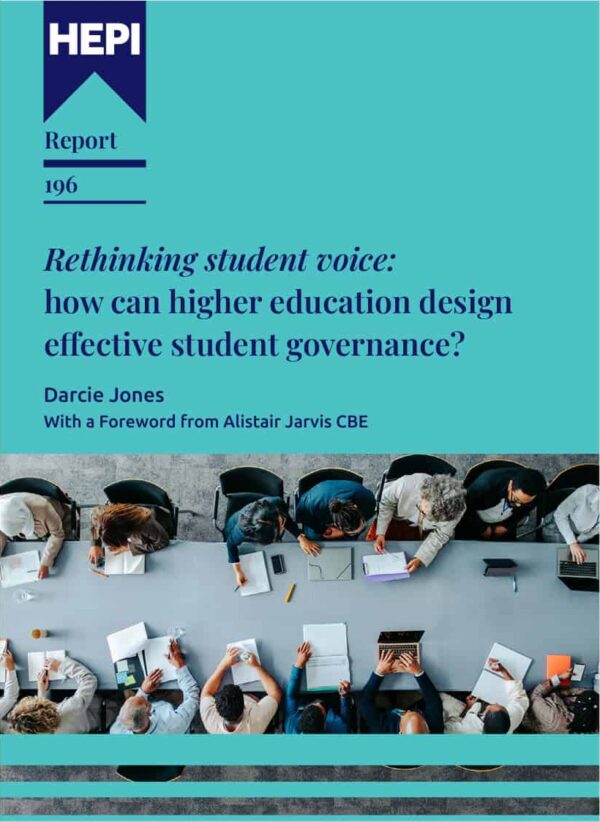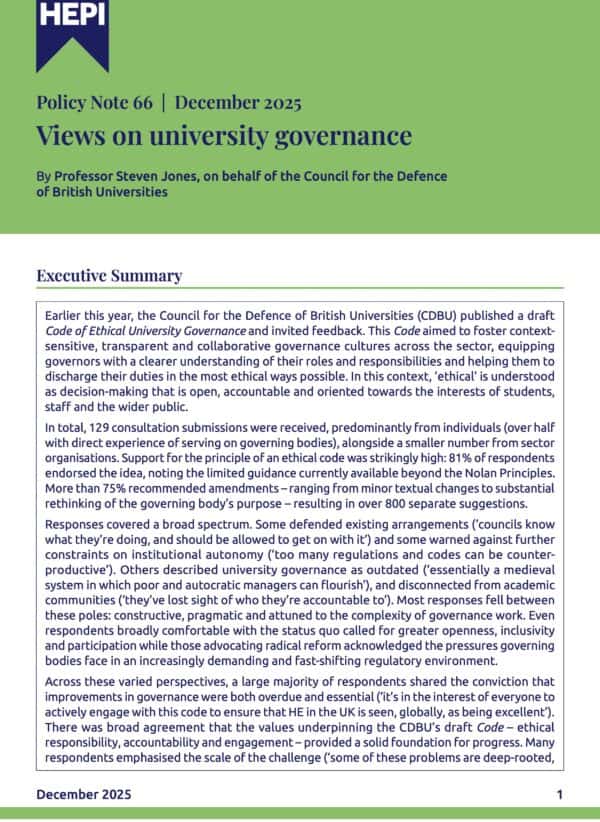Who leads our universities? Inside the recruitment of vice-chancellors
A new HEPI Policy Note, Who leads our universities? Inside the recruitment of vice-chancellors, by Tessa Harrison (GatenbySanderson) and Josh Freeman (HEPI), examines the career backgrounds of 153 university vice-chancellors.
Based on a new dataset of vice-chancellors from across the UK’s universities, a snapshot from February 2025, we explore tenure, previous roles and institutions, trends in gender balance and performance in university league tables, as well as setting out recommendations for recruiting vice-chancellors.
The Policy Note includes a foreword by Professor Sir Chris Husbands, former Vice-Chancellor of Sheffield Hallam University.
Key findings:
- There has been significant turnover at the top, with nearly half of vice-chancellors being appointed since 2022. Vice-chancellors have been in post for an average of four and a half years, less time than the average FTSE100 CEO.
- The vast majority (115 of 153) were already in a senior leadership position at a higher education institution before their current job, most commonly deputy vice-chancellor (72) followed by pro-vice-chancellor (24). A third of Russell Group vice-chancellors held a vice-chancellor role at a different institution first.
- Around a quarter of vice-chancellors (38) were recruited internally. The majority were recruited from institutions in the same mission group (MillionPlus, University Alliance, Russell Group, GuildHE).
- Around one-third of vice-chancellors (49 of 153) are women, and most female vice-chancellors were recruited in the last five years.
- Vice-chancellors from outside the sector and those who previously held a vice-chancellor role elsewhere perform the best in university league tables. Vice-chancellors from the Russell Group and foreign institutions perform the worst, even when compared to those from other mission groups.
We recommend that those recruiting vice-chancellors should:
- Be clear about the role and requirements of the vice-chancellor;
- Appoint a balanced and skilled Selection Committee;
- Provide extensive training for the Selection Committee in conducting interviews and interpreting answers;
- Set clear decision criteria in advance to avoid deadlock; and
- Prioritise the candidate experience.
Tessa Harrison, HE Partner at GatenbySanderson and a co-author of the report, said:
At a time of profound turbulence in higher education, we must pause and ask ourselves: are we being bold enough in how we recruit our vice-chancellors? Now more than ever, it’s vital to reflect not only on what it takes to lead a university, but what it means to lead for the whole sector. I hope this report sparks fresh thinking and braver conversations about the talent pipeline for the future of UK higher education.
Josh Freeman, Policy Manager at HEPI and a co-author of the report, said:
It is a precarious time for the higher education sector, with nearly three-quarters of institutions expected to be in deficit next academic year and thousands of job cuts across the UK. It might be tempting for institutions to play it safe when choosing someone to take the top role. These findings show that ‘safety first’ isn’t always the best strategy, at least as far as league tables are concerned.
Of course, there is much more to being an excellent leader than league table performance. These data are a snapshot and more research is needed to understand vice-chancellors’ performance once in post.
Institutions will be looking for someone who can inspire excellence in challenging times. Our universities must be bolder and consider candidates of all backgrounds, including those from different mission groups and outside higher education.
In his Foreword, Professor Sir Chris Husbands writes of the vice-chancellor role:
They show that the job has become more definitively the job of a chief executive, less overtly or obviously academic, but with some of the overtones of being a football manager – leading in the shadow of league-table performance.
The appointment of a vice-chancellor is always a hinge-point in the development of any institution. It is costly and time-consuming, which means the stakes are high for both the university and the successful candidate. Chairs and boards are right to consult widely on what the institution wants and needs.
Notes for Editors
- HEPI was established in 2002 to influence the higher education debate with evidence. We are UK-wide, independent and non-partisan. We are funded by organisations and higher education institutions that wish to support vibrant policy discussions, as well as through our own events. HEPI is a company limited by guarantee and a registered charity.
- GatenbySanderson is the UK’s leading people advisory firm across public services, not for profit and education. Working within complex, challenging and highly scrutinised environments we deliver executive search, interim leadership and leadership development and consultancy.








Comments
Add comment